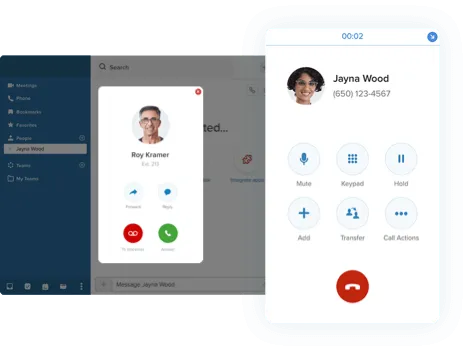

What is outbound and inbound call center?
What is outbound and inbound call center?
A call center consists of a versatile team of agents who are trained to receive calls or make outbound phone calls. As such, the main types of call centers can be divided according to the services they provide: inbound and outbound.
What are inbound call centers?
An inbound call center receives incoming calls typically made by existing customers of businesses. Providing exceptional customer service is the main function of this type of call center.
What is the meaning of outbound call center?
An outbound call center is one where the agents make outgoing calls to prospective customers.
What’s the difference between inbound and outbound calling?
What are the main differences between inbound vs outbound call center?
Inbound calling occurs when customers or potential customers initiate contact with a business or organization. Inbound call center agents provide reactive customer support, meaning when someone calls, they react.
Inbound call center services
Below are some common inbound telephone answering services:
- Product or technical support - Agents answer questions regarding consumer products or services and provide technical support where possible. Call agents can also route customers to dedicated tech support teams if necessary.
- Help desk services - Customers can report faults or problems, submit complaints, or order products.
- Payment and order processing - Agents can process and take payment for inbound sales orders via the phone or help customers resolve issues with payment, billing, or placing orders.
- Upgrades and renewals - Agents can handle customer calls regarding upgrades and renewals of subscription-based products or services.
What kind of calls do outbound call centers make?
Outgoing calls are mainly initiated by sales and marketing teams. The main purposes of outbound services include:
- Telemarketing: Agents use direct response marketing to contact warm leads or make cold calls in an attempt to sell a business’s goods or services. A sales dialer can streamline these efforts, allowing agents to quickly connect with prospects and spend more time selling.
- Market research - This involves agents conducting phone surveys to identify customers’ pain points and better understand their customers.
- Lead generation - Cold outreach allows agents to generate and qualify leads.
- Appointment setting - Agents can set appointments with customers on behalf of salespeople.
Business process outsourced call centers
Previously, call centers were located within a centralized office where every agent had a desk and a phone where they handled calls. Nowadays, businesses can choose whether to outsource their call center to an outsourcing company, keep it on-premises, or manage it remotely (think: virtual offices), allowing agents to work from anywhere, at any time.
Since the 1990s, many businesses in the United States have turned to business process outsourcing (BPO) as a way to save money on the operational costs of call centers. Call center outsourcing to countries where the cost of living is cheaper than in the business’s home country has many benefits.
When they outsource to a cheaper remote location, it allows large businesses to save on the costs of renting and running a co-located call center office in their country. What’s more, it lets them achieve greater operational and staffing flexibility and take advantage of outsourced call center technology.
That being said, outsourcing a call center to an overseas call center company also brings with it some disadvantages. For instance, the agents won’t have the same level of product knowledge as a dedicated team. There may also be issues with communication barriers and culture shock.
Ultimately, you may be able to save more when you keep your call center on-premises, especially if you get the right call center solution. Cloud-based call center solutions offer the same benefits of call center outsourcing and much more.
Do you need an inbound or outbound call center service?
Depending on the size of your business and the industry you operate in, you could benefit from an inbound or outbound call center.
If you operate a growing small-medium business (SMB), you'll benefit from implementing an inbound call center solution with AI receptionists into your operations. These AI-powered systems can handle initial customer interactions, freeing up your limited staff for more complex tasks. Cloud-based phone system solutions with AI capabilities are ideal for modern SMBs looking to operate efficiently on a global scale.
Businesses operating in certain industries will have more use for inbound call centers, whereas others will need a call center to make outbound calls to customers or potential customers. Some, however, will benefit from a call center solution that offers both capabilities.
It’s not just retail and customer service industries that utilize call centers. Whether you provide health care services, operate a real estate agency, or run a successful law firm, customers and clients always need someone to speak to when they have inquiries. Moreover, you’ll likely need people on hand to reach out to customers and clients when necessary.
It’s not only customers who can benefit from implementing an inbound call center solution. Large businesses can benefit from having a dedicated human resources call center.
An HR call center can provide employees with access to critical services or information without putting a strain on internal HR departments. For instance, large video production companies might outsource call center operations to HR management companies to handle large volumes of employee requests.
Agents at software development companies might also conduct customer surveys (over the phone or via email/message) to understand how audiences are receiving their products and services.
This information will be collected, analyzed, and passed on to product design or software development teams, web designers, mobile app developers, and digital marketing teams. Armed with that kind of information, businesses can make the necessary improvements on user experience based on customer feedback.
What's the difference between call centers and contact centers?
A call center traditionally only handles voice calls. Once your call center handles phone calls from customers and communications on other contact channels (messaging, email, live-chat, social media, etc), it’s no longer just a call center; it’s a contact center.
Nowadays, most organizations have adapted to consumer communication trends and adopted an omnichannel approach to customer interactions. However, the industry hasn’t quite shaken off the call center label. That explains why the two terms are often used interchangeably.

How do you handle inbound and outbound calls?
Handling both types of calls requires businesses to have a comprehensive call center strategy in place.
Where inbound calls are fundamental to call centers focused on support services, outbound calls are geared towards generating leads and sales. How both types of calls are handled can be the difference between a great customer experience and one that turns the customer off your business for good. Often, call center agents will be trained to handle both kinds of calls.
Handling inbound calls
Inbound calls are processed and sorted—usually using interactive voice response (IVR)—then either handled directly or transferred to the appropriate agent or department. Agents might use call center tools to streamline and augment their answering services. Once the phone call is successfully connected, it’s all about handling the call as smoothly as possible.
Customer service representatives are the face and voice of a business, so it’s important that they know how to handle calls professionally to achieve customer satisfaction. Agents should use pre-determined call center metrics to gauge customer success.
The agent must listen to the customer story, whether it’s a complaint or an issue with a product, and attempt to resolve it. The main goal is to solve the customer’s issue within the first interaction (first call resolution). This prevents them from having to wait for an answer or call back. Therefore, service reps need to have good knowledge of product design and functionality to be able to provide accurate advice.
If the agent can’t resolve the issue immediately, they must efficiently follow up on the request via email or another phone call.
Handling outbound calls
Outbound calls are more contextual. How an agent handles the call depends on why they’re making the call in the first place. For instance, sales teams who are cold calling prospective customers regarding a product or service will take a different approach to those calling to conduct customer surveys.
If you’ve received a sales call before, then you probably know how frustrating it can be when they come at an inconvenient time or if the person talking is clearly following a run-of-the-mill sales script. To successfully use outbound calls as a means of generating and qualifying leads, agents must follow some communication best practices to understand the customer story and personalize their support.
An outbound call strategy uses key performance indicators (KPIs) like average handle time, conversion rate, and first call close to ensure their calls yield the desired results. If not, it’s time to rethink the strategy. It’s also worthwhile drafting up call lists of qualified leads to increase the chances of closing and making a sale. Scripts shouldn’t be relied upon solely but used as a crutch in case an agent is struggling.

Advantages of inbound call centers
There are many benefits to setting up a call center for your small or medium-sized business. Below are three of the main advantages:
Facilitate better customer experiences
Call centers are customer-focused. They cater to answering customer service inquiries or proactively reaching out to customers to build relationships. Whether you choose to outsource your call center to a BPO company or go the smarter route of managing one yourself, having dedicated agents to cater to your customers’ needs will improve customer experience and satisfaction.
In today’s digital world, customer service expectations have shifted. Customers expect to be able to interact with companies and organizations across a variety of channels.
Providing omnichannel support with a contact center platform that allows communication across voice and digital channels (web-chat, text message, email, etc) is a guaranteed way to facilitate a seamless and integrated customer experience.- Improve productivity and efficiency
A dedicated customer service team can increase how productively and efficiently your business runs overall. Call centers provide plenty of performance-enhancing features like call routing, call recording, and more, to more efficiently handle customer queries.
Moreover, by employing and training agents to handle incoming and outgoing calls, you can streamline business operations and enable employees to focus on the roles they perform best. - Manage higher call volumes
As a small business, you’re constantly growing. As your call volume grows, there’ll come a point where your existing team can’t handle them all. This can result in calls going unanswered and customers getting frustrated.
A dedicated call center allows you to handle a higher number of calls. Moreover, it means no call will go unanswered. You can focus on growing your business, with the peace of mind that trained agents are keeping your customers happy.

How to choose the right inbound call center solution for your business
Call center software can be used to streamline calls, improve agent productivity, and enhance the quality of customer service that agents can provide.
Today, businesses are leveraging the power of cloud-based call center solutions that provide enhanced functionality on a centralized platform. When choosing the right software for your business, there are some key features to look for.
Top features of call center software
Below are six of the top features to look for when investing in call center software for your small business.
1. Virtual receptionists
Virtual receptionists (AKA, interactive voice response) is a feature that provides customers with a recorded menu. The IVR routes calls based on the customer’s needs. It’s essentially a tool that facilitates call routing, call transfer, call forwarding, and other related services.
2. CRM integrations
Call center software that offers customer relationship management integration provides agents with access to the information they need to assist or convert callers successfully.
CRM system integrations let agents know:
- Where a call comes from and caller contact information
- The caller’s purchase history
- Caller demographics
- How long callers have been on hold
CRM systems have access to information from different business departments. Armed with this information, agents can appropriately serve customers and resolve their issues more efficiently.
CRM and contact center integrations allow for better coordination among sales, customer service, and marketing company departments. This, in turn, leads to a 360-degree view of the customer, which enables agents to provide the personalized experience modern consumers crave.
Moreover, with all this information available on a shared agent platform, service reps can stay up to date with customer info while eliminating the redundant task of switching between platforms.
Before answering the phone, agents receive a screen notification about who is calling. This enables them to better prepare for the call and provide speciality answering services personalized towards the specific caller.
With real-time and historical reporting, teams can view real-time metrics to track their performance. Customer service managers and team leaders can use this information to inform future business and inbound marketing (social media marketing, content marketing, etc.) strategies.
By understanding why, when, and how customers interact with your business online, you can make actionable decisions to further improve customer experience.
This feature records calls between agents and customers. A customer service manager can then listen back to keep track of agent performance and provide feedback to enhance their performance.
Managers can listen in on live calls without the customer or agent knowing and then provide feedback on agent performance. This feature is crucial for training purposes.
Under the same category of call monitoring are tools like whisper coaching and barge-in functionality. Together, these tools allow supervisors to ensure exceptional employee performance that leads to high levels of customer satisfaction.
What’s the best choice for companies looking for a contact center solution?
A contact center solution should offer all of the essential call center features listed in the previous section, along with omnichannel capabilities to facilitate better customer interactions.
RingCentral’s inbound contact center solution is one of the top inbound call centers software available for SMBs. The RingCentral solution enables businesses to provide top-class customer service from a centralized, integrated platform. It offers plenty of features and tools to streamline and optimize customer support.
RingCentral’s inbound contact center technology enables businesses to deliver a more robust customer experience through artificial intelligence, skills-based routing, and automated self-service options. Featuring supervisor tools and countless business tool integrations, RingCentral empowers small businesses to provide exceptional customer experience every time.
With RingCentral, businesses can benefit from omnichannel flexibility and connect with their customers on the platforms and channels they prefer—not only on the phone. Moreover, with RingCentral’s customer support, there are always informed cloud consultants on hand to help you out when things get complicated.

The best thing? A call center solution like the one from RingCentral is scalable—they can grow as your business grows.